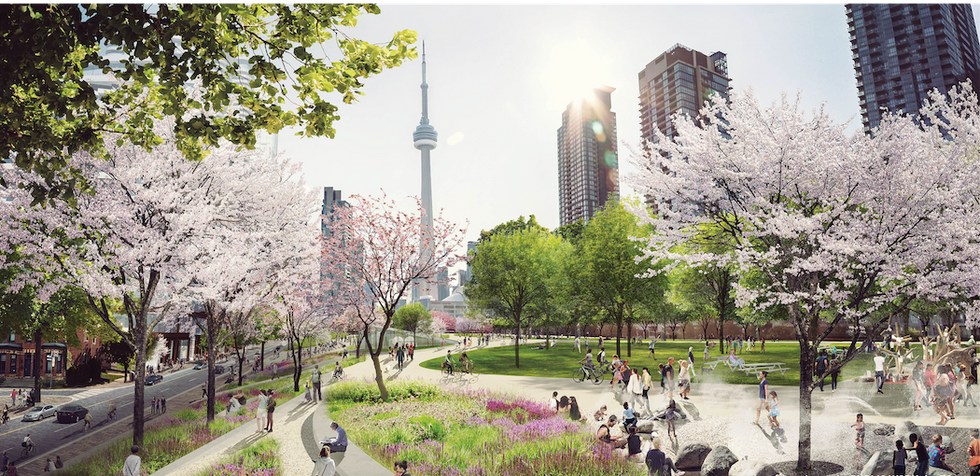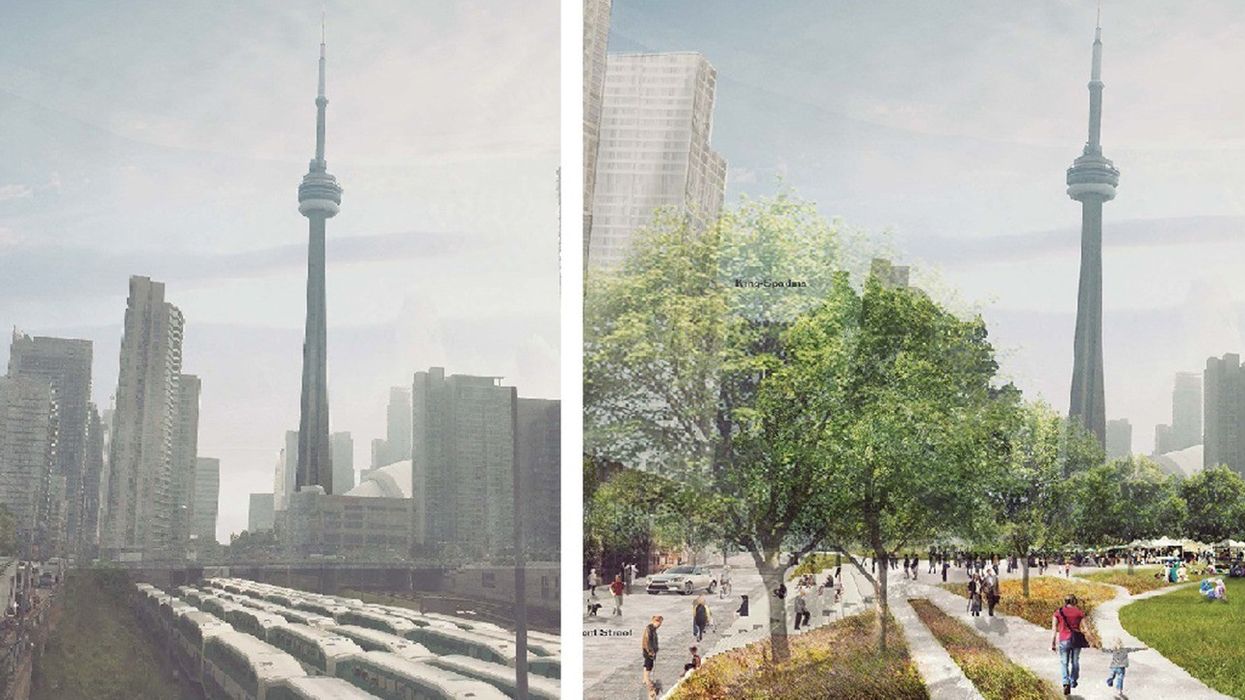
To say Rail Deck Park is highly anticipated would be an understatement.
Since the idea for constructing a 20-acre park between Bathurst Street and Blue Jays Way was first announced, it has excitedly been referred to as Toronto’s new backyard.
On Nov. 28 the City of Toronto’s Executive Committee voted unanimously to proceed with planning for the park. And this week, Dec. 5-7, it goes to city council for approval. Aside from its potential to become an iconic city landmark, there are several important reasons why all Torontonians should get behind this ambitious plan.

Anyone flying into Pearson airport will notice that Toronto has lots of green space. But if they were to look closer they’d notice all those ravines and major parks are concentrated outside the downtown core. On both an area and per person basis, downtown Toronto has much less parkland than the citywide average.
A paper authored by the Ryerson City Building Institute’s Claire Nelischer and Graham Haines found that the City of Toronto has 28 square metres of parkland per resident — about the size of a garage. With its 100 hectares of parkland, downtown has only 4.2 square meters of parkland per resident — about the size of a Ping-Pong table.
Then of course, there is downtown’s growing population, which is rising at a much faster pace than the rest of the city. From 2011 to 2016, downtown’s residential population grew by 20 per cent, while the rest of the city grew by just three per cent.
This isn’t a blip on the population charts, either. The City’s TOcore plan anticipates the downtown core will grow to 475,000 residents by 2041, almost doubling its current population. Without a significant park space investment, the already large parkland disparity between downtown and the rest of the city will only continue to grow.
Aside from the population, our city is also, quite literally, growing up. The majority of downtown residents live vertically and don’t have outdoor amenities. Only 10 per cent of downtown households have backyards, compared to 47 per cent of households in the rest of the city — this means the needs for parks is even more acute downtown.
Land prices are another important reason for the city to invest in the project. At an estimated $1.6 billion for Rail Deck — including air rights — it’s a relative bargain compared to the cost of acquiring 20 acres of downtown land. The cost of land in the core has increased at a much faster rate than the city’s park budget, making the purchase of land for new public greenspace today next to impossible.

With free and unencumbered land in west downtown ranging from $95 million to $115 million per acre, the city has settled for creating small parks on land it already owns or on development sites.
Small parks are important components of a healthy public space network. But large parks that can accommodate community recreation and gathering are also critical — particularly as more and more families call downtown home.
Major park projects in other cities have shown the spin-off benefits Torontonians can expect from Rail Deck. Chicago’s 24.5-acre Millennium Park was also built over an active transportation corridor and is similar in scale, context and complexity to the Toronto project.
Completed in 2004, and funded by the city ($270 million) and philanthropic contributions ($220 million), Millennium Park led to an estimated $1.4-billion increase in the value of adjacent properties. It’s attracted new customers to local businesses and increased tourism. It’s such an important part of 21st century Chicago that most residents can’t imagine the city before it was built.
Toronto faces a defining moment.
The rail corridor is the city’s last opportunity to access a large, contiguous piece of land in the downtown core and transform it into public space. Rail Deck Park could serve the immediate parkland needs of hundreds of thousands of nearby residents. Most importantly, it will ensure liveability and improve the quality of life for downtown families today and in the future.





















